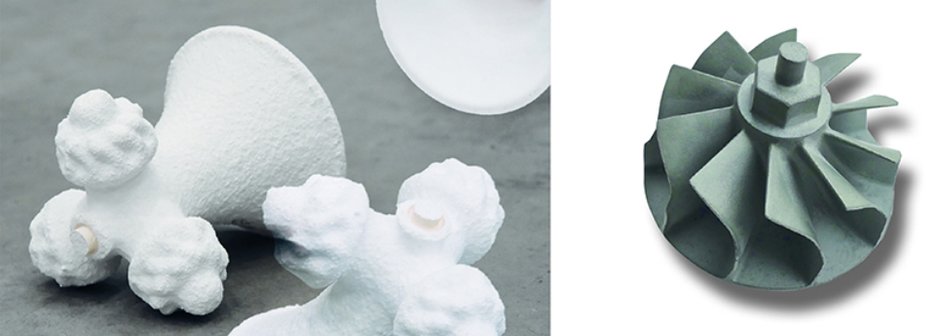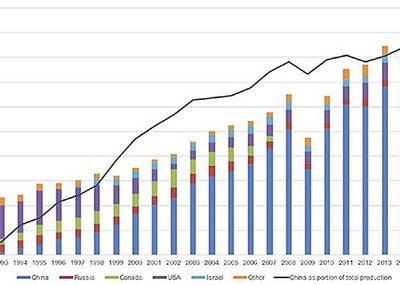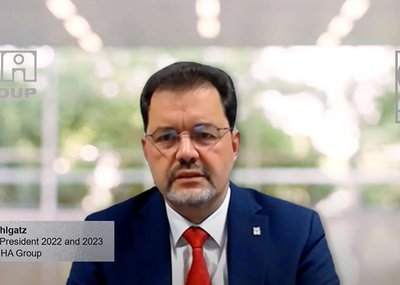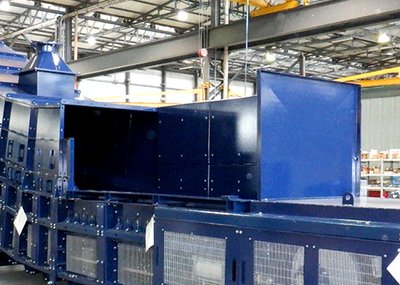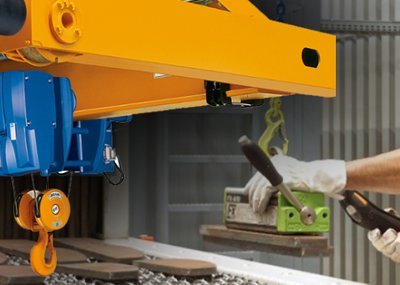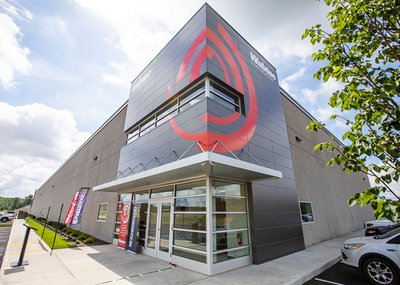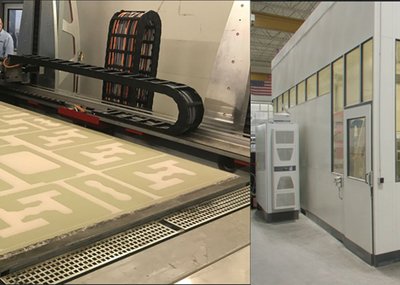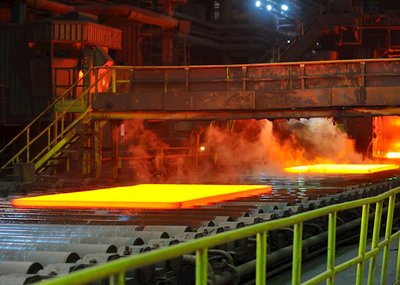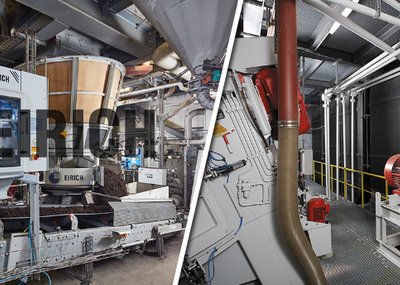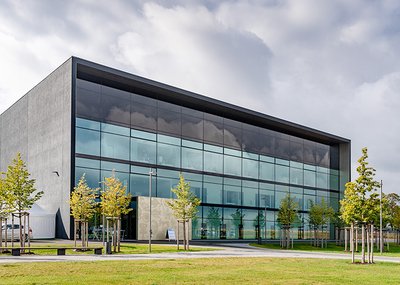Various crucible melting methods are used up to date for metal melting in investment casting. Although widely used, they have some disadvantages. For most (non-reactive) materials ceramic crucibles are used which can result in impurities or ceramic inclusions affecting the quality of the cast part. Reactive metals, e.g. Titanium alloys, are melted in cold wall crucibles. The low superheat and high power consumption in the cold wall sealing process is a price for a cleaner melting process. For the first time, non-contact levitation melting can be used as an alternative on an industrial scale, as ALD Vacuum Technologies GmbH has succeeded in increasing the previous limited weight quantity of only 50 g to unprecedented 500 g. Using numerical modelling the melting experts have devised a new system design that works with two alternating magnetic fields, which allows these higher weight quantities to be kept in levitation. Now with FastCast various metals and alloys like titanium, aluminum, or super alloys can be melted reliable in a non-contact levitation process without contamination and subsequently casted in a mold. The process allows a gentle, less turbulent filling process of the mold, which is favored by a high-speed take-off of the mold and therefore the low relative velocity between free-falling melt and sinking mold. The special and extensively patented design allows strong superheating with comparatively low power input which favors “defect”-free casting resulting in economic benefits and lower mould preheating temperatures. The integrated mold centrifuge coupled with the high superheat enables the casting of highly complex and filigree investment castings made of reactive titanium alloys.
Ceramic crucibles are widely used for casting nickel-based or iron-based alloys. They are cost-efficient and to a certain extent allow superheating, i.e. raising the temperature above the liquidus temperature of the alloy. However, these crucibles are rather unsuitable for melting extremely reactive materials at high temperatures, as this leads to an inadmissible contamination of the melt. This prevents the manufacturing of high purity, near net-shape casting parts made of metals and alloys such as titanium. By comparison, the competitive cold wall casting technique is more suitable for such materials but requires high amount of power for melting the material in water-cooled copper crucibles. Furthermore, overheating is not very feasible with this method, because most of the power required for this flows directly into the cooling water of the crucible and is, so to speak, dissipated. Therefore, a melting process without the material coming into contact with the crucible (non-contact) would be desirable. The ALD Vacuum Technologies GmbH had set itself the goal of converting this principle into a fully functional plant fit for industrial use.
“One process fairly suitable to start with was the so-called levitation melting,” reports Dr. Sergejs Spitans, R&D Process Engineer, Physicist & Simulation Expert at ALD Vacuum Technologies. “A ‘conventional’ levitation melting uses an axisymmetric coil to create a magnetic field in which metallic samples can be contact-free confined and melted. The problem is that Lorentz force confinement vanishes on the symmetry axis and the melt leakage is prevented in this lowest point of a levitated melt only by the surface tension. Therefore, only small molten metal samples up to 50 g can be levitated in this ‘conventional’ way.” As part of his dissertation work and under the supervision of Prof. Dr.-Ing. (Doctor of Engineering) Egbert Baake from the Institute of Electrotechnology (ETP) at Leibniz University Hannover, Dr. Sergejs Spitans from ALD used numerical models and various experiments to find a way to significantly increase the melt weight. Together with engineers from ALD, a pilot plant was developed where numerous aluminum-, nickel- and titanium- (Ti-6Al-4V) alloys up to 500 g were successfully melted in high purity without inclusions. The method applies two horizontal and orthogonal electromagnetic fields of different frequencies in order to exert a Lorentz force also at the bottom of the levitated sample. Therefore, the weight of the charge can be increased and the charge can be melted drip- and leakage-free. Levitation melting prevents contamination of the molten metal with the crucible material and results in significantly higher alloy purity. In addition, heat losses from the liquid metal are limited to radiation and evaporation only, which allows much higher superheat temperatures to be achieved. The high superheat opens up new avenues for mold design and thus for thin-walled and complex castings such as medical or aerospace applications.
From concept work to industrial-scale pilot plant
After an extensive series of simulation-aided design iterations, the optimized process was transferred into a functional plant including feeder, preheating furnace and casing. “The final scale-up configuration has a modular levitation assembly group that consists of four ferrite poles and four inductors, each is water-cooled and protected by heat shields,” describes Spitans. “The opposing inductors form a pair that operates at the same frequency and produces an instantaneous magnetic field in the same direction. The orthogonal orientation allows to compensate the regions of the zero Lorentz force that occurs if only one field is activated.” “Levitation melting is only slightly more efficient than the cold wall crucible, however, the advantages like predefined melt purity, absence of the skull scrap, fast melting speed and tremendous superheat up to 250 C at the moment of mold filling makes the process extremely attractive for complex castings,” Spitans adds.
To meet the demands of industrial production, the pilot plant offers a semi-automated process chain with up to 10 molds. The upper housing contains a vertical feeding unit of the pre-alloyed metal electrode to be melted. The lift moves the mold to the upper position right below the melting zone. The melting starts as the lower end of the vertically oriented Ti-alloy electrode is immersed in the region of two-frequency horizontal and orthogonal electromagnetic (EM) fields. EM fields rapidly melt up to 500 g of material from the tip of the electrode and simultaneously confine the liquid metal in a levitation condition. The electrode is moved up and detached, the levitated melt can be superheated. After that the melt is released by retracting poles and it falls down under gravity in the awaiting preheated mold. Instantly the mold is accelerated vertically down to reduce the relative velocity and to catch the melt without splashing. Further mold deceleration to a full stop and consequent spinning completes the smooth and qualitative mold filling. After that, the form exits through the unloading chamber and the next cycle can start. All in all, the cycle times are rather short, with less than 60 seconds, making the process very economical.
Plant can be used for test runs by interested companies
Up to this point, almost all relevant titanium- and aluminum-based alloys as well as super alloys were cast successfully using the pilot plant. To ensure the suitability and efficiency of the system, common investment casting components such as turbocharger wheels were cast using the plant. Based on this design, ALD is going to develop a production FastCast system in cooperation with interested users, specifically for the needs of their own production. Feeding and mold number (adapted to the mold shell) in particular will be taken into account. Therefore, the demonstrator can be used for test runs. Although the actual plant is semi-automated, a special department at ALD is working on more features that meet the requirements of Industry 4.0. For example, a digital twin of each casting part can be generated to ensure highest quality control. Since they are individual casts, each part can be tracked down to defects that may show up before or after the casting. “The high purity, excellent reproducibility, and continuous and automated single batch production line favors a very high casting quality, making non-contact levitation melting particularly suitable for investment casting parts in demanding sectors such as aerospace and medical technology. We can’t wait to move this process to the next level together with industry partners,” Spitans sums up.

